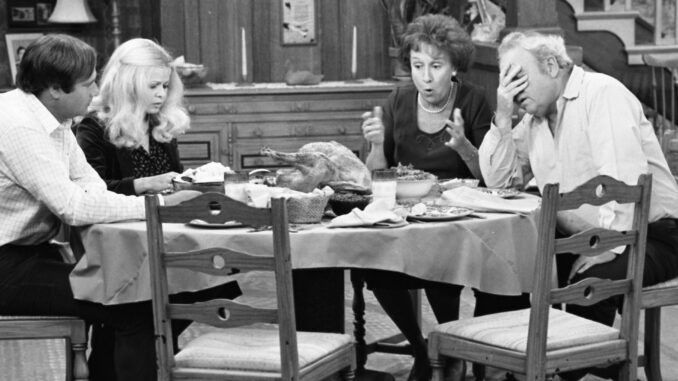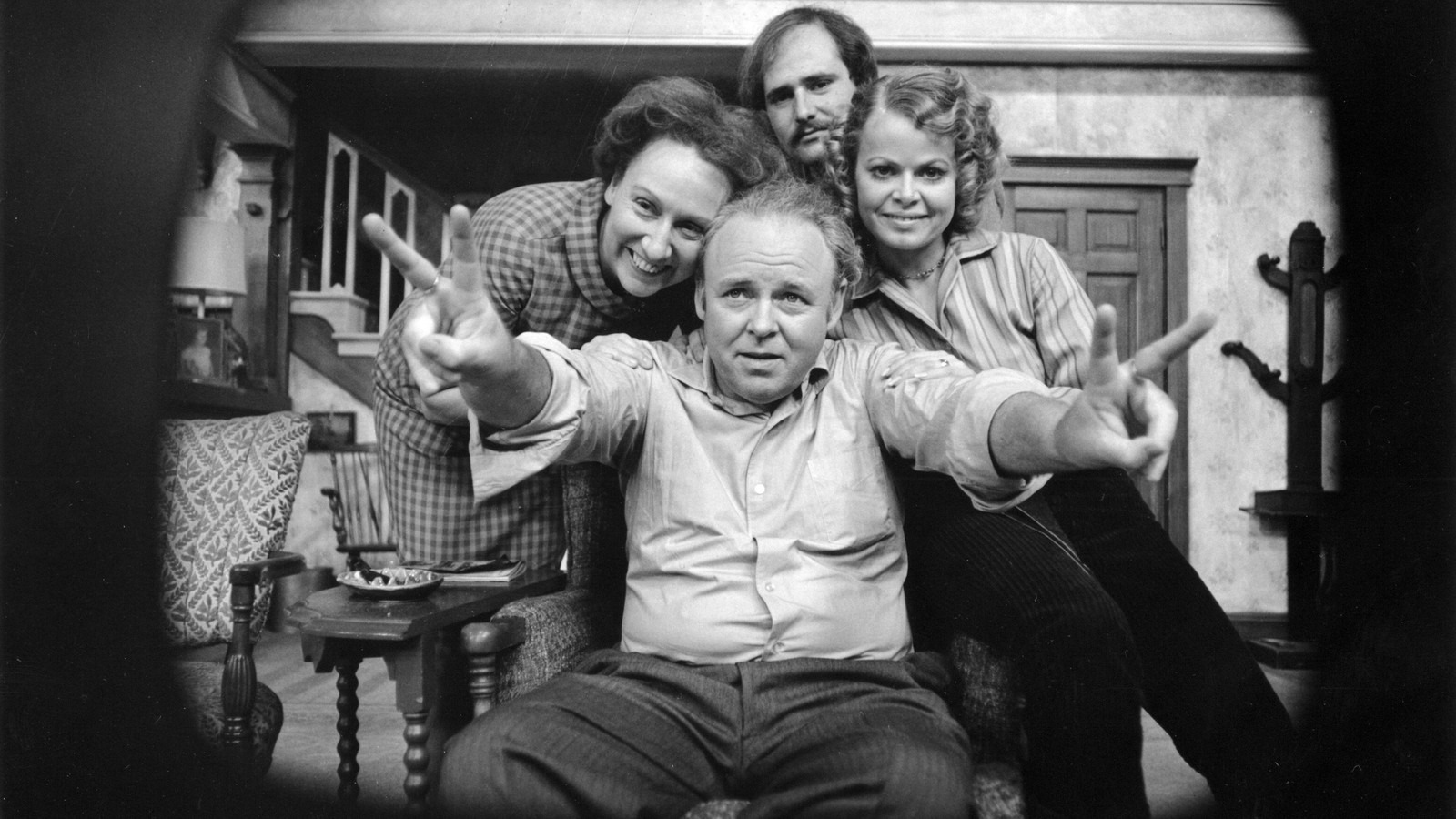
Television has seen many groundbreaking shows, but few have shaken the foundation of American culture like All in the Family. Premiering in 1971, this Norman Lear masterpiece didn’t just entertain—it challenged, provoked, and transformed how sitcoms told stories. Let’s dive deep into how this one show forever changed the face of television.
The Birth of a Revolution in Prime Time
Before All in the Family, sitcoms were mostly lighthearted escapism—think Leave It to Beaver or The Dick Van Dyke Show. They avoided controversy, preferring idealized versions of American life. But when Archie Bunker burst onto TV screens, everything changed.
All in the Family wasn’t afraid to be raw and real. It tackled race, class, gender, and politics head-on—issues that most networks avoided like the plague. This was the start of a revolution in prime-time storytelling.
Archie Bunker: The Flawed Everyman America Needed
At the heart of the show was Archie Bunker, played brilliantly by Carroll O’Connor. Archie was loud, opinionated, and unapologetically prejudiced—but he was also human. Audiences loved and loathed him at the same time.
He wasn’t a villain or a hero—he was something more powerful: a reflection of America itself. Through Archie, viewers confronted their own biases and beliefs, sparking discussions that echoed far beyond living rooms.
Edith Bunker: The Heart That Softened the Edges
While Archie ranted, Edith Bunker, portrayed by Jean Stapleton, brought warmth and compassion to the show. Her gentle, nurturing spirit provided balance. Edith’s patience with Archie symbolized the quiet resilience of many women of that era—holding families together amid social change.
Her character proved that kindness could coexist with strength. She wasn’t naïve; she was the show’s moral compass.
Breaking the Silence on Taboo Topics
One of the show’s greatest contributions was its fearless exploration of taboo subjects. All in the Family talked about everything:
-
Racism and bigotry
-
The Vietnam War
-
Women’s rights
-
Homosexuality
-
Religion
-
Poverty and the working class struggle
No topic was off-limits. What other sitcom could make people laugh one minute and question their world the next?
Laughter as a Weapon for Change

What made All in the Family genius was its use of humor to address uncomfortable truths. Laughter disarmed viewers. Once they were laughing, the show slipped in powerful commentary that lingered long after the credits rolled.
Comedy became a vehicle for social awareness—a model many later shows adopted, from The Simpsons to Modern Family.
Pioneering Realism in Television
Visually, All in the Family broke conventions too. It used minimal sets, real-time pacing, and even live studio audiences to create a feeling of authenticity. The characters felt alive, the arguments felt unscripted, and the emotions were raw.
It was messy. It was human. And that’s why people couldn’t stop watching.
The Generational Clash: Archie vs. Michael
The dynamic between Archie and his liberal son-in-law Michael “Meathead” Stivic (played by Rob Reiner) became the heartbeat of the show. Their debates mirrored the generational divide sweeping America in the 1970s.
While Archie represented the old guard—traditional, resistant to change—Michael symbolized the progressive youth demanding transformation. Their constant clashes weren’t just funny; they were a national conversation.
Changing What Sitcoms Could Be
Before All in the Family, sitcoms were comfort food. After it, they became conversation starters. The show proved that television could tackle serious issues without losing its humor.
This paved the way for shows like MASH*, Cheers, Roseanne, and The Office. Each owed something to All in the Family’s willingness to be bold.
The Power of the Audience Reaction
When All in the Family first aired, CBS received both praise and outrage. Some viewers accused it of promoting prejudice; others saw it as holding up a mirror to America’s flaws. But that was exactly the point—it made people feel something.
The laughter, the gasps, the letters to the network—all were proof of the show’s cultural impact. It got people talking, and in doing so, it changed television forever.
Spawning a Universe of Spin-Offs
The show’s success didn’t end with its run. It created an entire universe of spin-offs, including:
-
Maude
-
The Jeffersons
-
Good Times
-
Archie Bunker’s Place
Each show carried on the tradition of addressing real-world issues through comedy, expanding the show’s influence across generations.
Criticism and Controversy: The Double-Edged Sword
With its fearless storytelling came controversy. Critics debated whether All in the Family was progressive or problematic. Did it challenge prejudice—or normalize it? The ambiguity was intentional. Lear wanted viewers to think, not just laugh.
This layered complexity gave the show its longevity. It never preached; it provoked.
Behind the Scenes: Norman Lear’s Vision
Norman Lear, the show’s creator, deserves enormous credit. His vision was to make people laugh and reflect. Lear believed TV could do more than entertain—it could enlighten.
He once said he wanted to show “the foolishness of the human condition.” Through All in the Family, he did exactly that, giving television its conscience.
A Cultural Mirror for America
Watching All in the Family was like looking in a mirror. It exposed the cracks in American ideals—racism, sexism, and fear of change—while still celebrating the messy beauty of family life.
The show didn’t tell viewers what to think; it asked them to look closer. And that self-reflection made it timeless.
Influence on Modern Television
The DNA of All in the Family can be found in nearly every modern sitcom. Shows like Family Guy, The Office, and Modern Family owe their format and courage to it.
Its blend of humor and social commentary set a gold standard for television writing that still guides creators today.
Awards and Recognition
The show wasn’t just popular—it was historic. All in the Family won 22 Emmy Awards, including Outstanding Comedy Series four years in a row. It also topped countless “Greatest TV Show” lists, cementing its status as a classic.
The Legacy Lives On
Even decades later, All in the Family remains relevant. Its themes of misunderstanding, change, and tolerance continue to resonate. Whether through reruns, documentaries, or cultural references, the Bunkers still live in the public consciousness.
It’s more than a sitcom—it’s a piece of American history.
Conclusion: The Show That Redefined What TV Could Be
All in the Family didn’t just make people laugh; it made them think. It broke barriers, sparked dialogue, and turned television into a mirror for society. Few shows have ever managed to be so controversial, heartfelt, and enduring all at once.
In a world where entertainment often plays it safe, All in the Family stands as a reminder that real change begins when we dare to laugh at ourselves.
